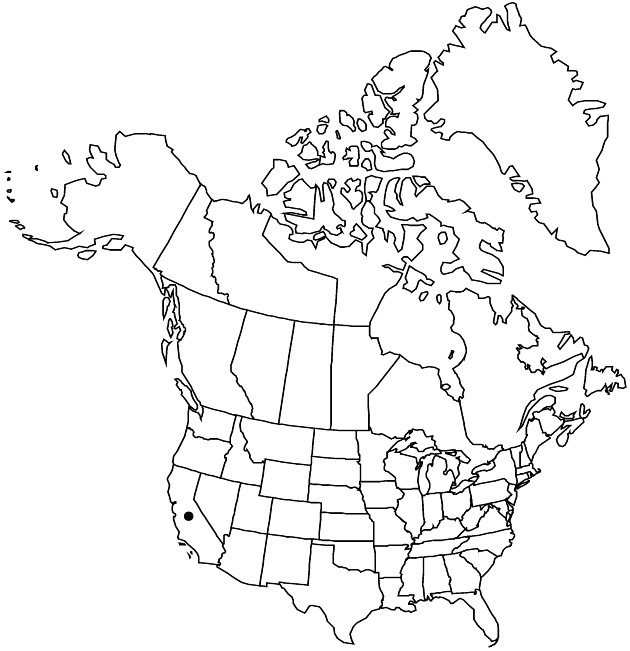Coreopsis douglasii
Univ. Calif. Publ. Bot. 3: 140. 1907.
Endemic
Basionym: Leptosyne douglasii de Candolle in A. P. de Candolle and A. L. P. P. de Candolle, Prodr. 5: 531. 1836
Treatment appears in FNA Volume 21. Treatment on page 189.
Annuals, 5–15 (–25+) cm. Leaf-blades simple or pinnately lobed, terminal lobes filiform, 0.5–1+ mm wide. Peduncles 5–15 (–20+) cm. Calyculi of (3–) 5 linear bractlets 3–5 (–12) mm, not ciliolate near bases. Phyllaries (5–) 8, ovate, 5–7+ mm. Ray-florets (5–) 8 (–9+); laminae 5–12 (–16+) mm. Disc-florets 8–60 (–100+); corollas 2.8–3.5 mm. Cypselae ± oblanceolate, 3.5–4+ mm, not marked adaxially with red dots or dashes, wings usually thin, sometimes corky-thickened, faces usually smooth, rarely tuberculate, not hirtellous. 2n = 24.
Phenology: Flowering Mar–May.
Habitat: Shale and serpentine slopes, sandy flats
Elevation: (150–)300–1000 m
Discussion
Selected References
None.
Lower Taxa
None.
"broader" is not a number.
... more about "Coreopsis douglasii"
introrse +
connate +
herbaceous +
2-3-toothed;entire +
scarious +
absent +
hirsute +
papillate +
continuous +
decurrent +
simple +
entire +
lobed +
winged;ribbed;winged;ribbed +
3;8 +
distinct +
herbaceous +
stigmatic +
absent +
not ciliolate +
zygomorphic +
yellow +
bristly +
dimorphic +
oblanceolate +
3.5mm;4mm +
red dots +
staminate +
Calif. +
straight +
beaked +
not hirtellous +
tuberculate +
linear-fusiform;4-angled;ovate;orbiculate;oblong;linear;cuneate +
distinct +
proximal +
1;5 +
bisexual +
dispersed +
singly +
indeterminate +
surrounding +
less globose;cylindric +
yellow +
simple +
lobed +
scarious +
2-carpellate +
inferior +
attached +
anatropous +
falling +
lanceolate;linear +
scarious +
persistent +
falling +
absent +
coroniform +
tough +
thick +
absent +
connate +
persistent +
distinct +
falling +
unequal +
Univ. Calif. Publ. Bot. +
1907 +
pistillate +
absent +
fertile +
paleate +
flat;convex +
fibrous +
exalbuminous +
modifed +
Endemic +
alternate +
branched +
erect +
2-branched +
papillate +
Coreopsis douglasii +
Coreopsis sect. Leptosyne +
species +
filiform +
equaling +
annual +
entire +
spreading +
not ciliolate +
corky-thickened +
membranous +
thin +
